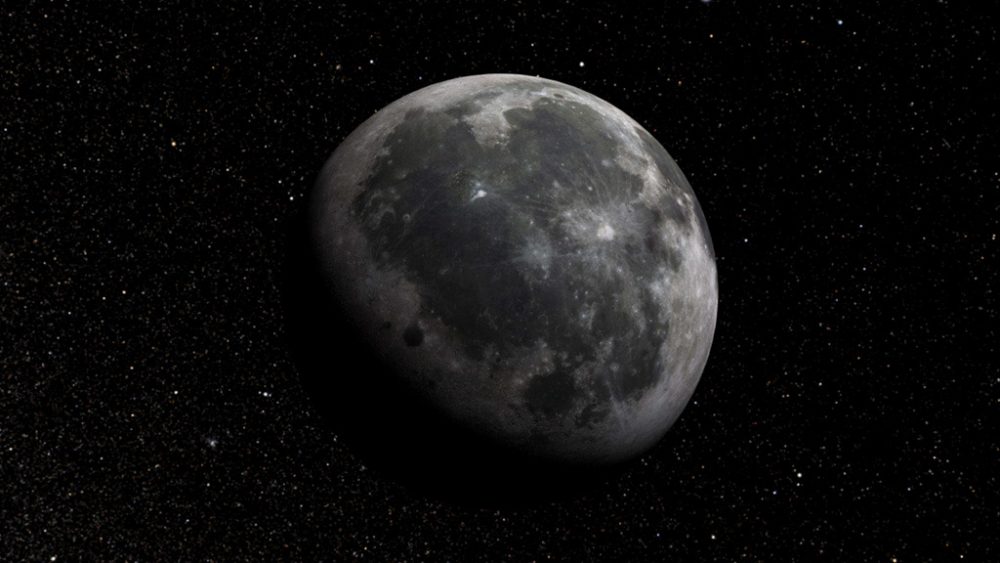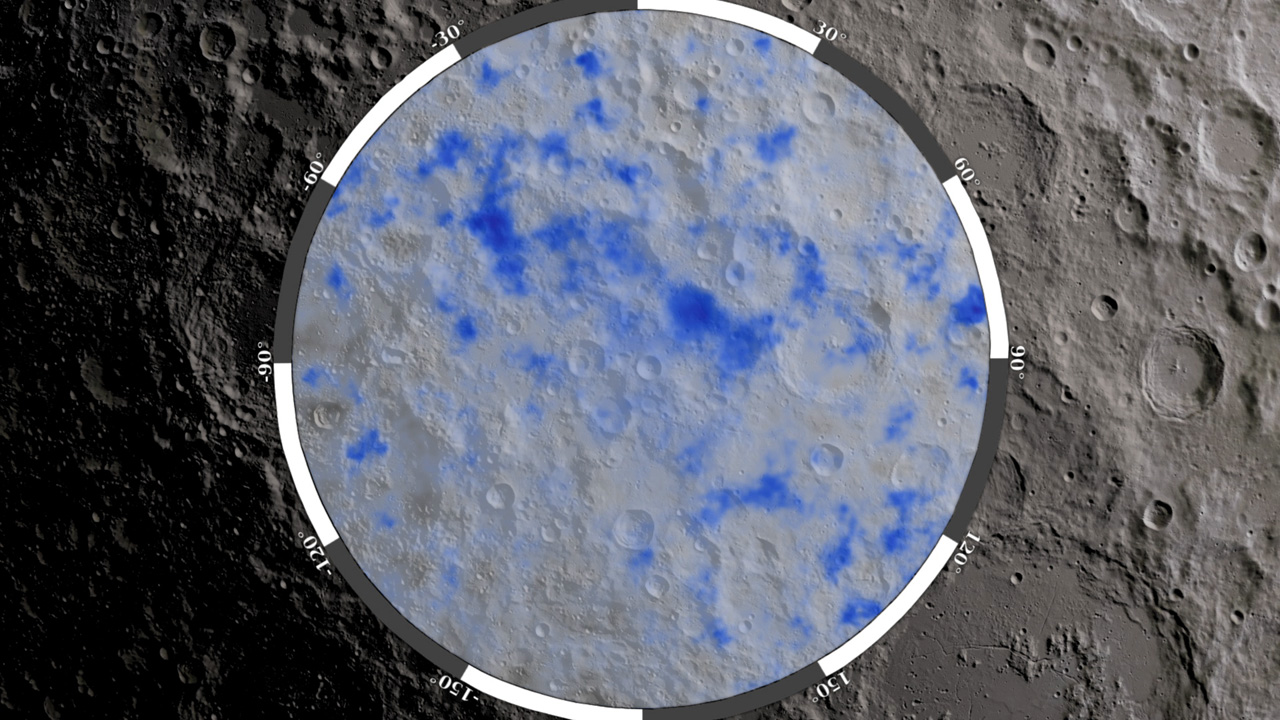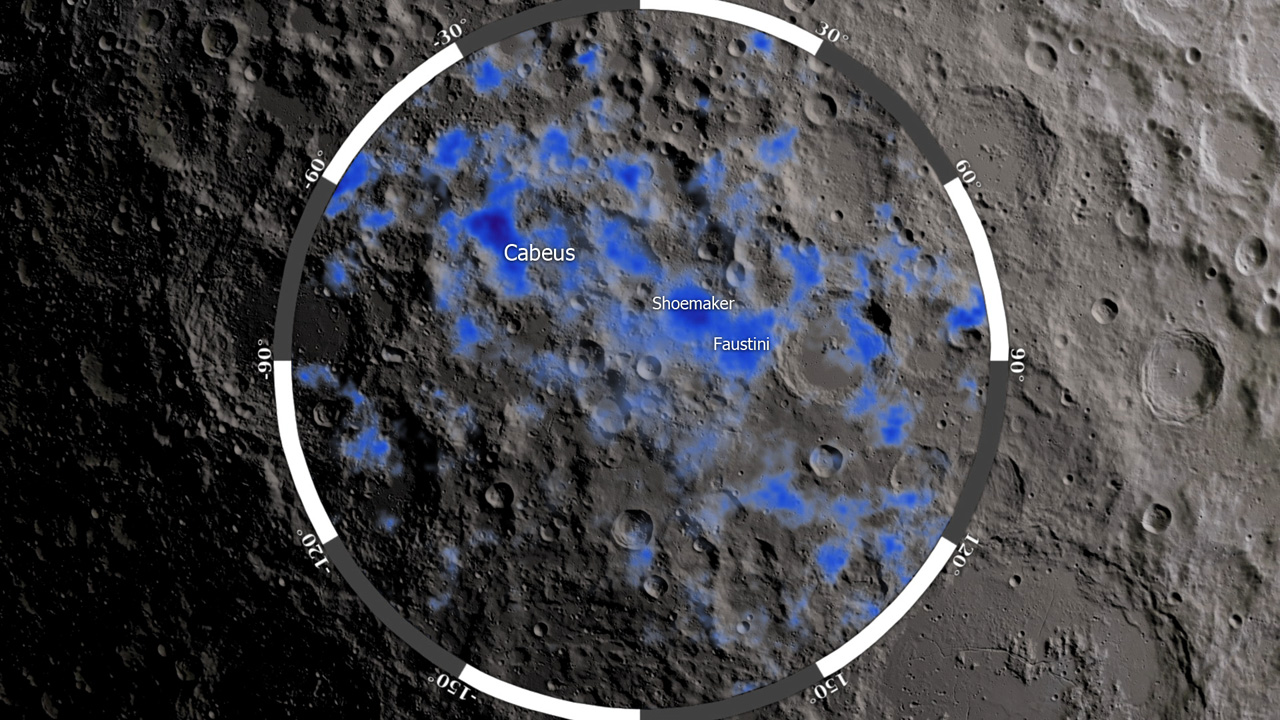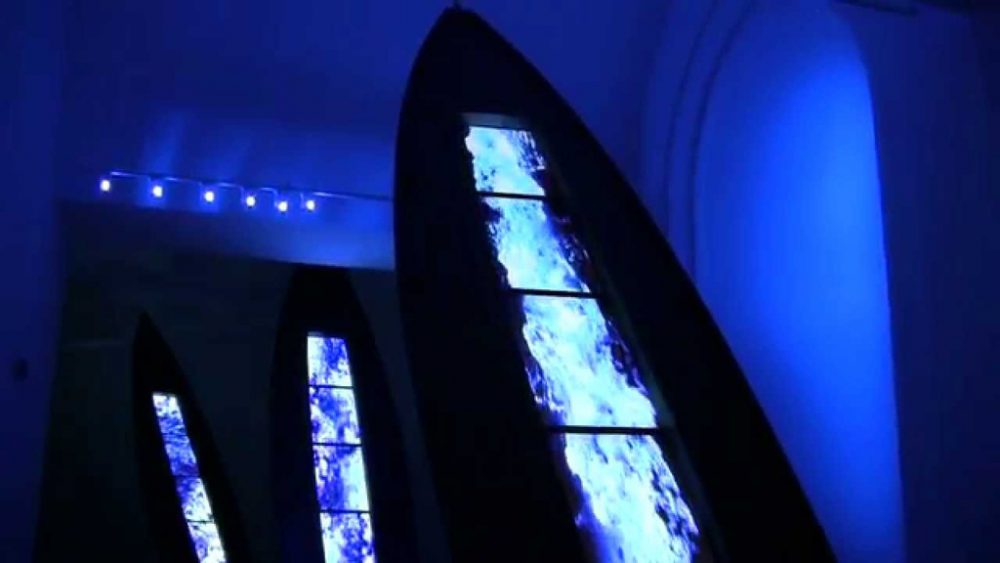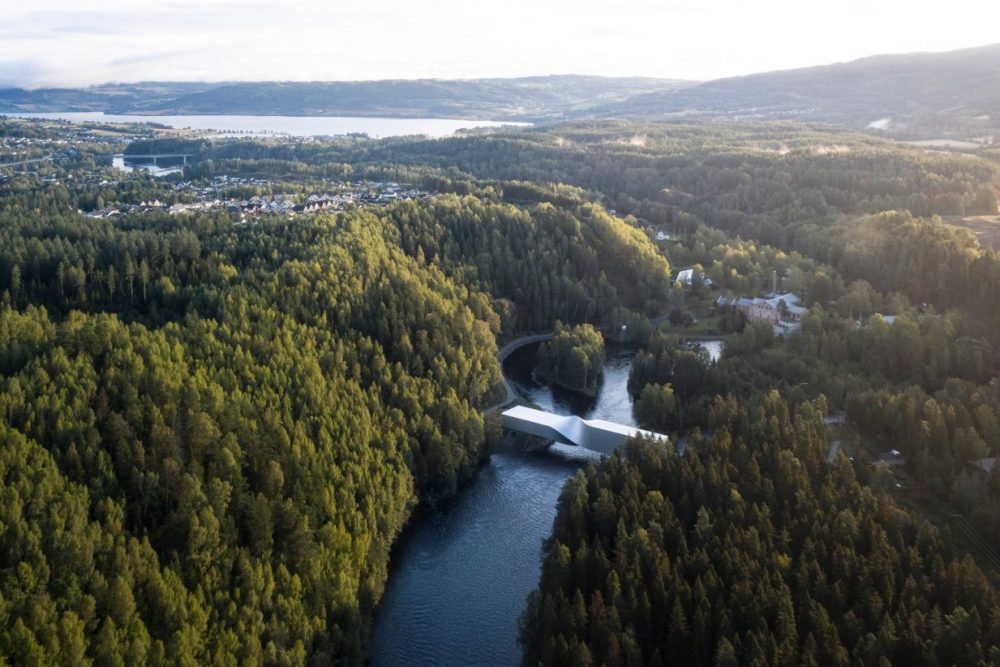Mare dentro — Sea inside
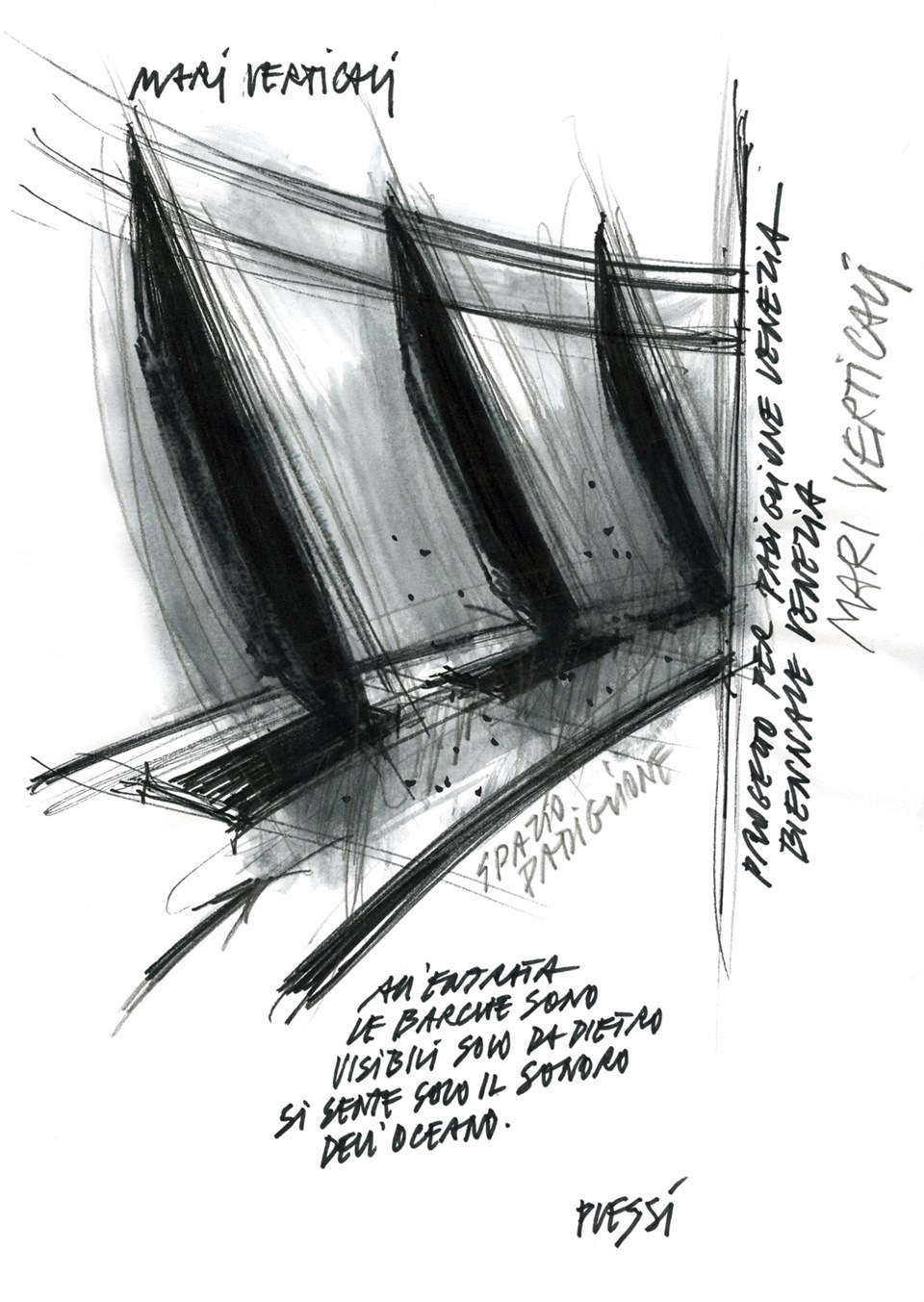
Mari Verticali venne realizzata per Louis Vuitton, al padiglione Venezia, in occasione della 54 edizione della Biennale di Venezia. Plessi propone qui una nuova visione della sua flotta digitale che si sviluppa in maniera simbiotica all’interno della struttura a emiciclo del Padiglione Venezia, riempiendone gli spazi con un grandioso concerto d’acque in continuo movimento e divenire. Sei imbarcazioni in acciaio nero emergono dall’oscurità mentre sui video schermi delle chiglie sono evocati suoni, correnti e flutti di simbolici mari. (Tratto da www.fabrizioplessi.net).
MARI VERTICALI, Fabrizio Plessi #mariverticali #fabrizioplessi #tempodacqua #thetimeofwater
In 2005 Fabrizio Plessi creates an updated version of Mare Verticale at the entrance to the Biennial Gardens: a cylinder that appears to emerge from the Venetian lagoon at a height of 44 meters, the symbol of the same Biennial of Art. In 54th Venice Biennale of 2011, Venice Pavillion is completely dedicated to him with video-installations Mari Verticali with big steel black boats, with a permanent and exciting water concert.
Fabrizio Plessi has been fascinated always by water, a recurring theme which has become the focus of his artwork in the form of installations, films, videotapes and performances.In 1970 his work was exhibited at the experimental Pavilion of the Biennial of Venice and again in 1972. His works werw installed in all the world. During the 1980’s Plessi begins to experiment with video, focusing on the illusions created between representation and reality of liquid elements which are amplified by the extreme technology of mechanical and electronic reproduction. More recently his artistic endeavours have drawn him closer to the city of Venice, where water – focal point of his art – plays a dominant role. In 2003, Fabrizio Plessi creates an installation for the Peggy Guggenheim Collection: Digital Fall one of the most technologically advanced sculptures in the world, fully equipped with constant air-control, an ultra-flat Led screen and full colour display.
The Twist: ponte e museo — Bridge and museum
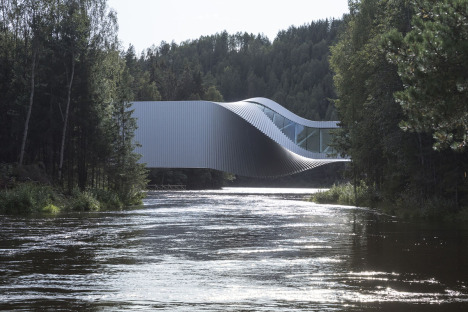
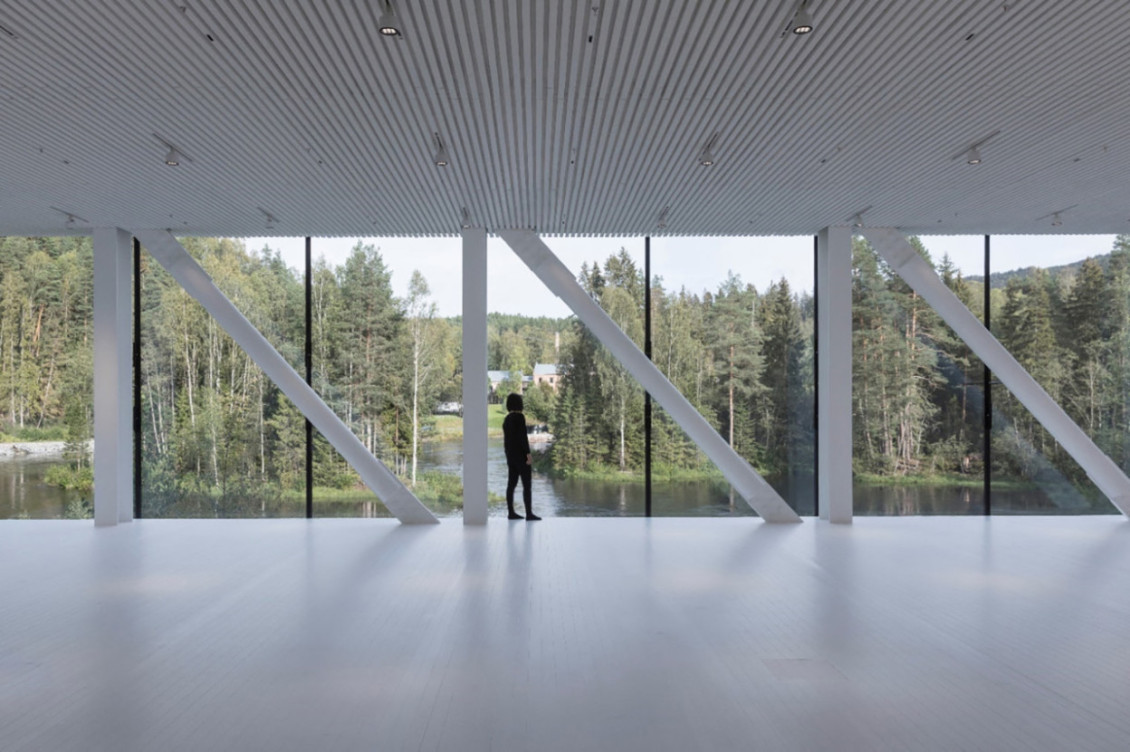
Una galleria, un dentro scopito come se l’acqua fosse passata e avesse scavato il tunnel. Un ponte sopra il Randselva a Jevnaker, in Norvegia. Progettata da Bjarke Ingels Group (BIG), la struttura rivestita in alluminio unisce i fronti dei fiumi nord e sud nel campus del Kistefos Sculpture Park.
THE TWIST, Biarke Ingels #big #tempodacqua #thetimeofwater
A sinuous new gallery and bridge reaches across the Randselva River in Jevnaker, Norway. Designed by Bjarke Ingels Group (BIG), the aluminum-clad structure joins north and south river fronts on the campus of Kistefos Sculpture Park. 15,000 square feet of space allows visitors to explore Kistefos’s large art collection while also taking in the surrounding landscape through floor-to-ceiling windows. The Twist opened to the public on September 18th, with an exhibition featuring the work of conceptual artist Martin Creed and painter Howard Hodgkin. Kistefos Sculpture Park has ticketed admission, which includes entry to The Twist, and is open seasonally from the end of May to mid-November. (via Design Milk)
BIG first won an international competition to create the bridge in 2015. The 1,000-square-meter (10,764-square-foot) aluminum-clad bridge connects the two river banks, with its twisted form allowing it to move from a lower to a higher elevation with ease. In fact, this uneven elevation between the two sides of the river created the problem that then transformed into the ingenious design known as The Twist. The bridge is just the latest art piece to appear at the Kistefos Museum and Sculpture Park. The addition of The Twist increases accessibility and will also allow for even more exhibitions within the museum (mymodernmet.com).


